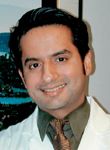- Case-Based Roundtable
- General Dermatology
- Eczema
- Chronic Hand Eczema
- Alopecia
- Aesthetics
- Vitiligo
- COVID-19
- Actinic Keratosis
- Precision Medicine and Biologics
- Rare Disease
- Wound Care
- Rosacea
- Psoriasis
- Psoriatic Arthritis
- Atopic Dermatitis
- Melasma
- NP and PA
- Skin Cancer
- Hidradenitis Suppurativa
- Drug Watch
- Pigmentary Disorders
- Acne
- Pediatric Dermatology
- Practice Management
- Prurigo Nodularis
- Buy-and-Bill
Article
The core of beauty
By the Core for the Core is a new educational program on aesthetic procedures geared specifically to physicians-in-training in the core specialties of dermatology, plastic surgery, and ophthalmology.

Key Points

The project is the vision of Vic Narurkar, M.D., who collaborated with Joely Kaufman, M.D., and Cosmetic Boot Camp founders Mary Lupo, M.D., and Ken Beer, M.D., to bring it to fruition. The founders say the program provides training in aesthetic procedures in a format that permits acquisition of knowledge and skills without commercial bias and that fosters multidisciplinary interaction for promoting greater learning.
"Unfortunately, aesthetic procedures are often shortchanged in residency programs, but it was clear to us that there existed a real thirst among residents and fellows for greater education," says Dr. Narurkar, assistant clinical professor of dermatology at the University of California, Davis, Medical School.
The first By the Core for the Core meeting was held in 2006 at the California Pacific Medical Center, San Francisco. A second program was offered in February 2007 at the University of Miami Miller School of Medicine, Miami, Florida, hosted by members from the Cosmetic Center of the department of dermatology and cutaneous surgery.
"As the first academic cosmetic center, the University of Miami is happy to be a part of this unique type of teaching opportunity," says Dr. Kaufman, assistant professor of clinical dermatology, Miller School of Medicine, University of Miami.
"This year we had attendees from all of the aesthetic subspecialties, including dermatologists from other countries. In my opinion, the collaboration with specialists both within and outside of dermatology is what sets this meeting apart."
The three-day agenda for each meeting covered topics in the "four Rs" - resurfacing (lasers), relaxing (botulinum toxin), refilling (fillers) and retaining (skincare) - comprising didactic presentations and small group sessions, during which faculty members performed live patient consultations and procedures.
"The live portion of the meeting simulated the scenario of daily office practice, where patients come in and decisions need to be made on what procedure is most suitable, given their particular situation," Dr. Narurkar says.
"At our meeting, groups of four or five attendees would watch faculty members discuss how they would handle the patient, and, while the procedure was being performed, the other speakers presented their own perspectives and responded to questions," he says. "This format provided an instructive session for the registered attendees, but also proved to be a tremendous learning opportunity for the faculty members."
Organizers plan to vary program sites for future dates to facilitate attendance by physicians-in-training in different areas of the country, and in recognition of regional differences in approaches to aesthetic practice. Enrollment has been limited to about 40 attendees, who must be physicians in one of the core specialties.
"Feedback from attendees showed they greatly appreciated being with other specialists having a similar level of fundamental knowledge about the skin and the dynamics of aesthetic procedures, because it engendered a more sophisticated, interactive dialogue," Dr. Narurkar says.
Future programs will also feature an expanded number of faculty members representing the surgical specialties.
"Our enrollment at the meetings held so far indicates we had a lot of interest from residents and fellows in plastic surgery, facial plastic surgery and ophthalmology," Dr. Narurkar says. "Therefore, we would like to broaden the decision-making perspective in the live sessions to include consideration of when minimally invasive procedures are not enough."
The programs are supported, in part, by unrestricted educational grants from industry. Sponsors have also helped to establish an award for a University of Miami dermatology resident to attend any professional meeting or preceptorship program to further his or her education in aesthetics.





